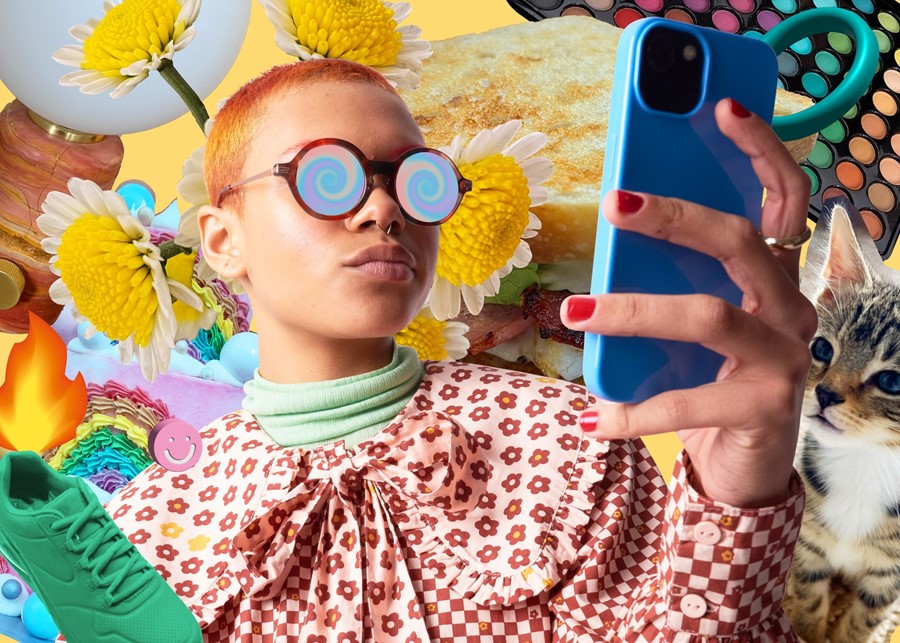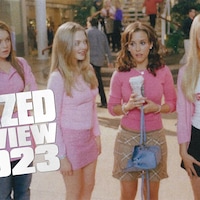Is TikTok’s new ‘deinfluencing’ trend genuinely an antidote to our culture of overconsumption, or is it just a symptom of our economically turbulent times?
Have you heard? We’re in a ‘deinfluencing’ era now. You read that correctly: influencers on TikTok are telling their followers what not to buy under the guise of critiquing overconsumption and saving money. The growing trend – which has mainly taken root in the beauty and lifestyle communities – comprises of videos in which popular products are labelled overhyped.
“I’m here to deinfluence you,” one user warns, in a video with over 56,000 likes. “Do not get the Ugg Minis. Do not get the Dyson Airwrap. Do not get the Charlotte Tilbury Wand. Do not get the Stanley Cup. Do not get Colleen Hoover’s books. Do not get the AirPods Pro Max.” If influencer marketing uses personal endorsements to sell products, in principle, deinfluencing should urge consumers to think critically about their purchases and evaluate their necessity.
‘Deinfluencing’ videos surfaced at the beginning of the year, as a sincere attempt to join the dots between trend cycles, unethical labour practices and excess waste. “We’ve all learned the impacts of the fast fashion industry,” Shelbi Orme, a sustainability content creator, weighed in under the deinfluencing hashtag, which at present has been viewed 100 million times on TikTok. “We [know] about the human rights violations happening within the fast fashion industry, but honestly ‘fast make-up’ is very problematic as well.” Orme is right, but it’s not just the fashion and beauty sectors which revel in unethical production – almost all global industries do. Since 1970, human resource extraction has more than tripled, including a fivefold increase in the use of non-metallic minerals and a 45 per cent increase in fossil fuel use. To put plainly, none of this is sustainable.
Yet, as is often the case online, what started as an honest, user-led intervention into our collective consumer behaviour, has been co-opted by influencers to shill even more products. ‘Deinfluencing’ videos have metamorphosed into a viral video format in which influencers are slating products they didn’t like and redirecting followers to other products or their ‘dupes’. In essence, most ‘deinfluencers’ on the app are really influencers in sheep’s clothing.
Evidently, the same people who regularly shove products in our faces are not interested in stopping, especially when it’s a source of income for them. For most, ‘deinfluencing’ appears to be the latest ‘socially conscious’ marketing ploy loosely based around sustainability and the financial hardship consumers may be experiencing during a global economic decline.
Worldwide, people have tightened their purse strings to survive rising rents, utility bills and inflation rates. At the same time, saturation and increased competition in the influencing market mean the job is simply not as easy as it used to be. In a recent report, 71 per cent of marketing agencies, brands, and influencers admit to having increased the amount of content they produce and share, while 63.2 per cent are feeling the impact of 2023’s macroeconomic circumstances.
@sadgrlswag De-influencing you, no more over consumption or else 💣💥! 😡😤 #GenshinImpact34 ♬ original sound - Estef
Influencer marketing has come a long way since it emerged in the form of celebrity endorsements. In the past, a small group of stars with millions of fans dominated ad campaigns, but their big audiences didn’t necessarily convert into sales. Today, there are influencers with audiences of all shapes and sizes. It’s not just the mega-influencers making the big bucks, but micro-influencers with smaller but highly engaged audiences are getting a slice of the pie too. To stay on top of their game, influencers perform authenticity and swear honesty in their endorsements of products. Even their tepid political views matter to audiences too.
When the tide against influencers turns, they’re forced to evolve. To survive people’s growing disinterest and inability to buy stuff, influencers – consciously or subconsciously – are fighting for people’s trust to differentiate themselves from the other, more blatant or vulgar salespeople. So ‘deinfluencing’ is a perfect way to get followers onside by evoking images of overspilling landfills and floating bits of plastic in the ocean while recommending a few more products for their online baskets.
What would a genuine wave of deinfluencing look like if it were to happen? Personally, I wouldn’t put my money on the anti-consumerist revolution materialising on the apps engineered to sell us stuff. As well as the existence of influencers, social media platforms have features designed to encourage overconsumption, such as endless scrolling, auto-play videos, and algorithmically-developed recommendations. Instagram and TikTok offer users a stream of engaging content they can scroll through indefinitely, exposing them to an infinite array of products, services, and lifestyles they might not have otherwise encountered. This continuous flow of product placements can pressure people to buy stuff they don’t need or can’t afford in order to keep up with the latest trends and maintain their social status. Though admirable, it’s naïve to think we can outsmart all the marketing devices deployed at us.
Conversations on TikTok and Instagram, like on any other public platform, can be meaningful, but lasting change will come from a significant economic overhaul needed to seriously tackle overconsumption. One such proposed idea is degrowth, which Jason Hickel, economic anthropologist and author of Less Is More, summarises as “a planned reduction of energy and resource throughput designed to bring the economy back into balance with the living world, in a way that reduces inequality and improves human well-being”. Consuming less makes up a large part of the vision, but producers ought to be held responsible too, not just by social pressure but also through legal frameworks. In addition, we’d need systemic changes that would shift societies into circular economies and reduce the production and use of goods harmful to the environment and, ultimately, to us.
Many intelligent thinkers have offered radical solutions to overconsumption, but in the meantime, remember that the next viral cream blush will only be as good as the other ones collecting dust in your drawer.
Join Dazed Club and be part of our world! You get exclusive access to events, parties, festivals and our editors, as well as a free subscription to Dazed for a year. Join for £5/month today.




